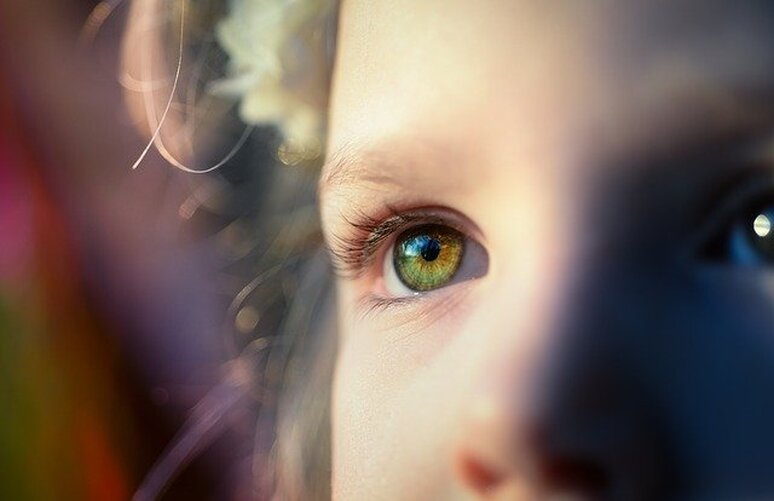Myopia: The Growing Epidemic of Nearsightedness
Myopia is the most common visual disorder among young people and is increasingly becoming a worldwide public health concern. Myopia, or nearsightedness, is the inability to sufficiently focus vision on distant objects. Blurry vision due to myopia is caused by lengthening of the eyeball, resulting in inability to properly focus light within the eye on the retina. The disorder is most commonly corrected by glasses, contact lenses, or refractive surgery. However, researchers predict that 49.8% of the world population will have myopia by 2050, so doctors and researchers are placing a heavy emphasis on preventative measures in order to stop myopia from developing in children in the first place.
The most effective preventative measure against myopia is spending around two hours a day exposed to sunlight. This is because natural sunlight plays an important role in regulating eye growth. The Sydney Adolescent Vascular and Eye Study concluded that a lack of natural light exposure is a much greater risk factor for myopia compared to high levels of close-up work (activities performed at short visual distances). In other words, no matter how much of an effort is made to decrease screen time or close-up work, it is usually not as effective for the prevention of myopia as it would be if paired with more time outdoors. Multiple studies have shown that the best strategy for myopia prevention in children is more time spent outdoors. In one such study conducted in Taiwan, 571 children between the ages of 7 and 11 were separated into two groups. The first group spent 80 more minutes per day outdoors than the second group did. After just one year, the first group’s risk of developing myopia fell by 50% compared to the second group.
The most effective preventative measure against myopia is spending around two hours a day exposed to sunlight. This is because natural sunlight plays an important role in regulating eye growth. The Sydney Adolescent Vascular and Eye Study concluded that a lack of natural light exposure is a much greater risk factor for myopia compared to high levels of close-up work (activities performed at short visual distances). In other words, no matter how much of an effort is made to decrease screen time or close-up work, it is usually not as effective for the prevention of myopia as it would be if paired with more time outdoors. Multiple studies have shown that the best strategy for myopia prevention in children is more time spent outdoors. In one such study conducted in Taiwan, 571 children between the ages of 7 and 11 were separated into two groups. The first group spent 80 more minutes per day outdoors than the second group did. After just one year, the first group’s risk of developing myopia fell by 50% compared to the second group.
Image Source: sasint
In the United States, rates of myopia have increased 25% in the last 40 years. Experts believe the reason for the increase is changes in children’s lifestyles. Children who have grown up during the age of digital technology spend less time playing outside than children of older generations did. Whether it is playing video games or spending time on increased amounts of homework, children nowadays spend much more of their time indoors. Additionally, schools have begun to utilize technology in the classroom, combined with a decreased emphasis on playtime outdoors. Even worse, however, has been the inevitable switch to online school due to the COVID-19 pandemic. Hours spent looking at screens and less time outside has caused rates of myopia development in Chinese children to increase 1.4 to 3 times more during the COVID-19 stay-at-home orders.
Genetic background does also play a role in the development of myopia, as nearsighted parents are more likely to have nearsighted children. However, poor visual behaviors, like insufficient time outdoors, have a greater effect on myopia development than genetics. In fact, one study found that bad visual behavior habits are roughly seven times more likely to lead to the development of myopia compared to genetic inheritance of the disorder.
It is important to note that once a child develops myopia, they should turn to treatment measures like atropine drops or multifocal contact lenses. However, public health interventions are needed to help slow the growth of the myopia epidemic. The most important public health initiative to implement is the promotion of outdoor time in children, as it is the most effective method of slowing myopia development.
Genetic background does also play a role in the development of myopia, as nearsighted parents are more likely to have nearsighted children. However, poor visual behaviors, like insufficient time outdoors, have a greater effect on myopia development than genetics. In fact, one study found that bad visual behavior habits are roughly seven times more likely to lead to the development of myopia compared to genetic inheritance of the disorder.
It is important to note that once a child develops myopia, they should turn to treatment measures like atropine drops or multifocal contact lenses. However, public health interventions are needed to help slow the growth of the myopia epidemic. The most important public health initiative to implement is the promotion of outdoor time in children, as it is the most effective method of slowing myopia development.
Featured Image Source: Skitterphoto
RELATED ARTICLES
|
Vertical Divider
|
Vertical Divider
|
Vertical Divider
|






